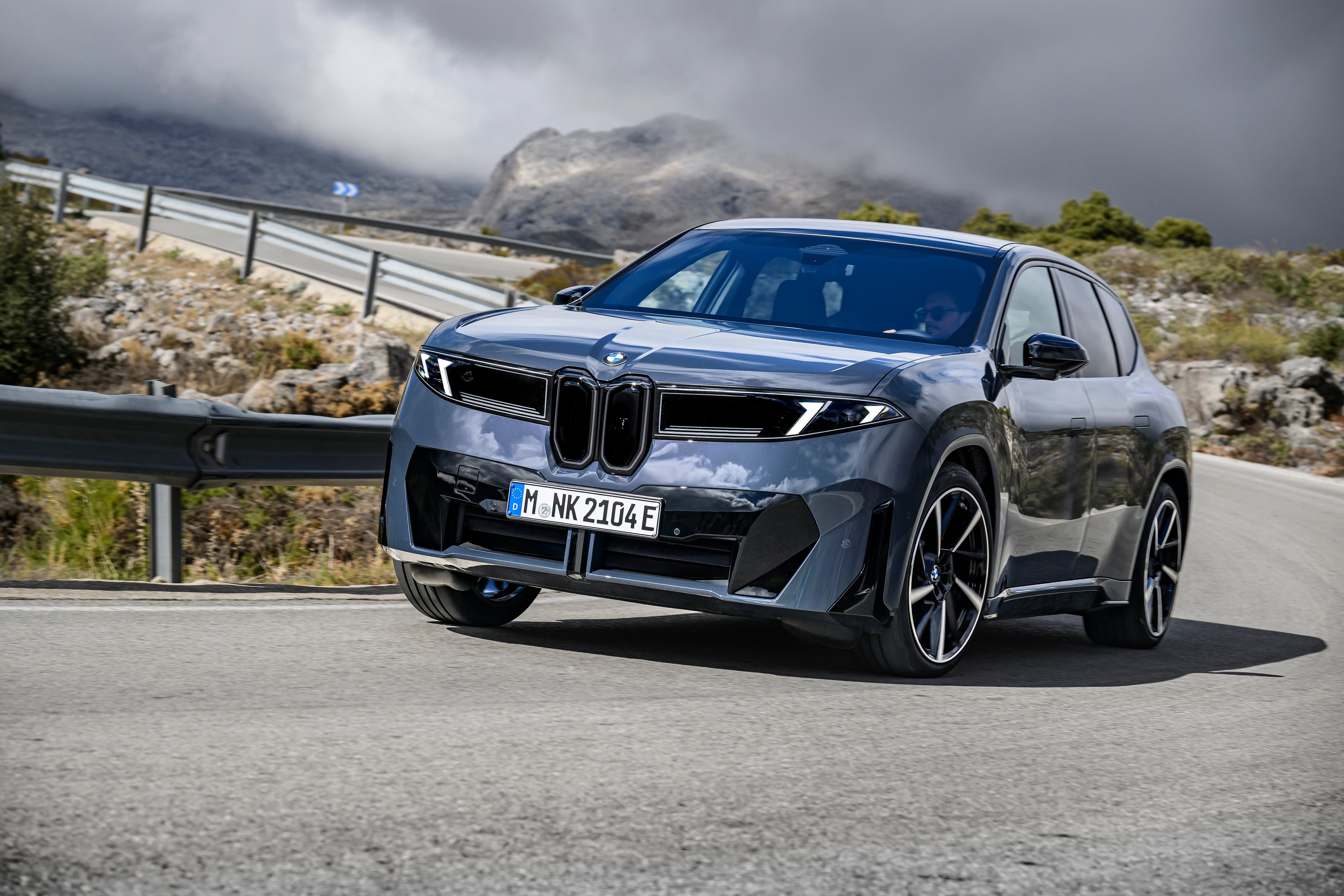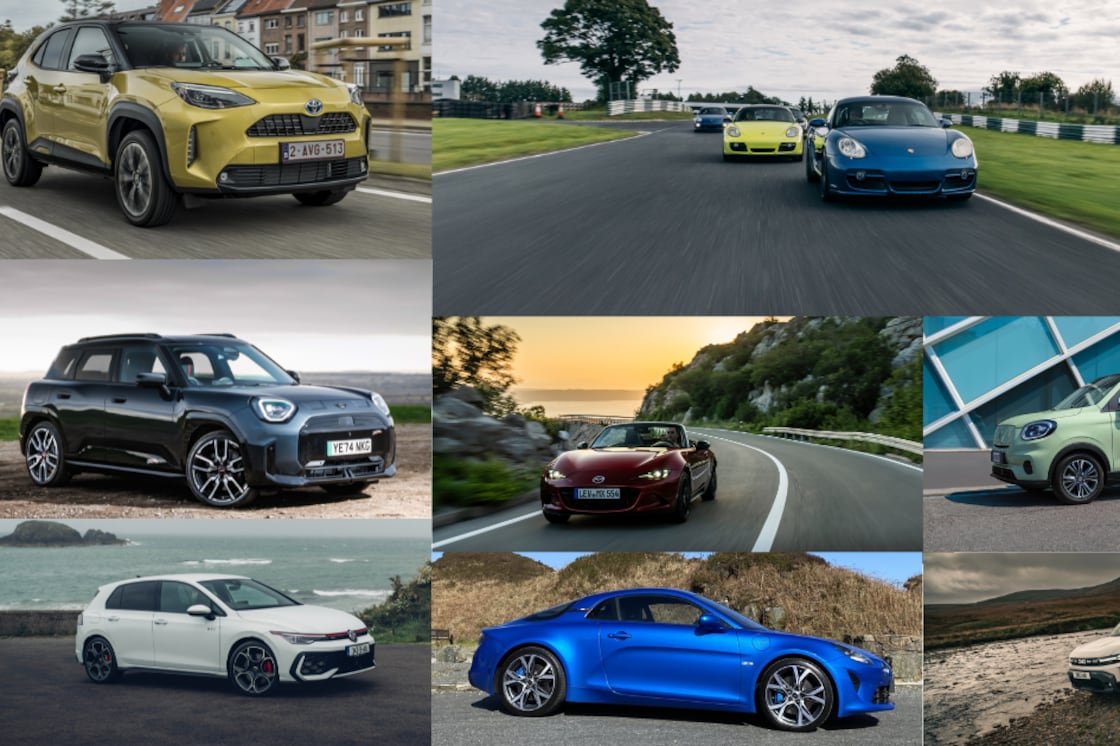There was something enormously appealing about the original Smart, latterly called the Smart ForTwo to distinguish itself from other models made by the brand. Designed to seat just two, and with a length of just 2.5m (8.2ft) that allowed it, in some markets, to be legally parked nose-in to the kerb, it still managed to have the same safety performance as a big Mercedes saloon. –
That’s largely because Mercedes designed and built the Smart, having originally created the brand in collaboration with watchmaker Swatch. When Swatch pulled out, Mercedes carried on alone, but in spite of a later link-up with Renault, the shutters appeared to come down on Smart a few years back, when sales of the little ForTwo, and the little-seen ForFour four-door, dried up.
Smart has been revived, however. Now it’s a joint venture between Mercedes and Chinese carmaker Geely, and the new cars are designed and engineered across locations in Germany, the US, and China but all will be built in China. They’ll use Geely’s own electric car platform, so there’s no relationship with Mercedes’ compact EQA and EQB electric models. Instead, the new Smarts will use the same platform as the Volvo EX30 and the upcoming Polestar 4.
They’re also not two-seaters anymore. Smart has decided that there’s just not enough profit margin in tiny two-seaters, and so it’s branching out to build something much more generic – a pair of electric crossovers.
READ MORE
The smaller of the two new models coming to Ireland in January is the #1. Yes, that’s actually pronounced hashtag1. Is Smart trying to woo the TikTok generation? Good luck with that; they haven’t got the ready cash for a new car . . .
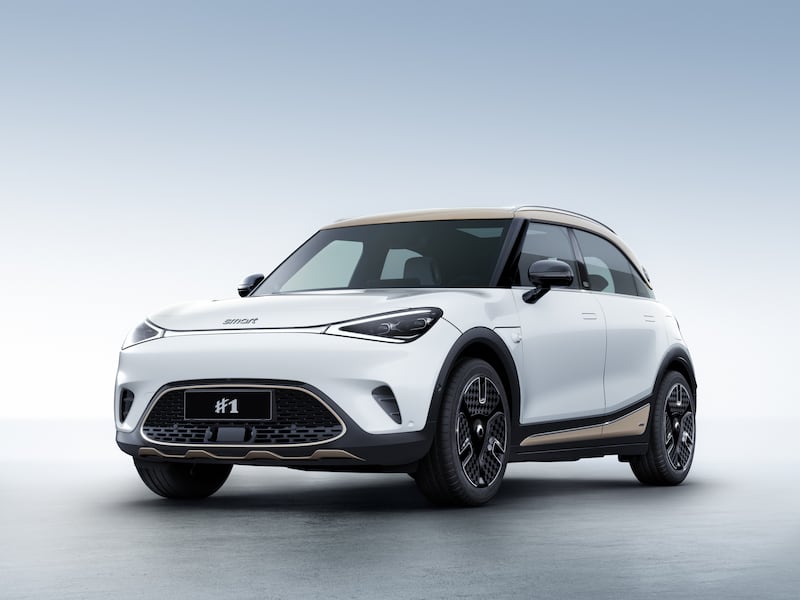
The #1 is compact, by modern standards, but you could practically fit an original ForTwo in its boot. It’s a chunky, and relatively tall crossover, with quite impressive cabin space, but it’s achingly dull to drive, with flaccid steering and a choppy ride quality.
Smart is promising to do better than that with its other new model – the #3.
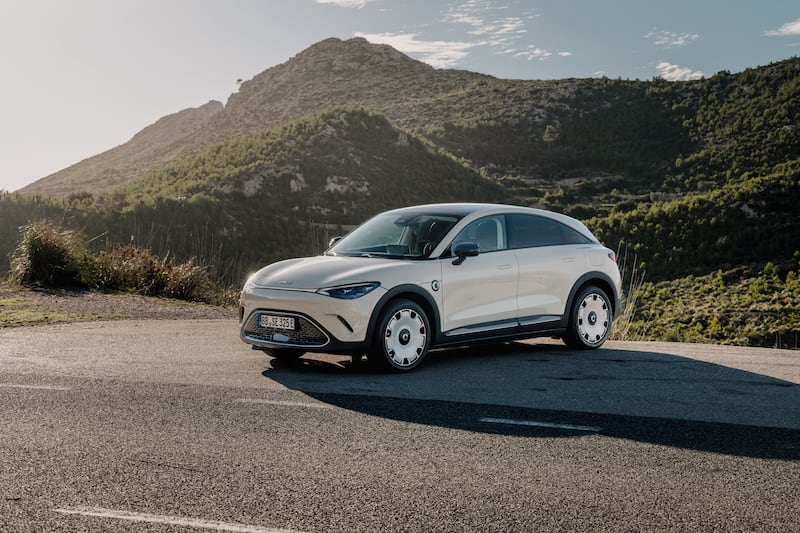
This uses the same basic mechanical setup as the #1, but it’s much lower and sleeker, sitting some 80mm lower down. That’s a significant drop in height when it comes to suspension and steering dynamics and Smart is promising that the #3 will deliver driving rewards.
It will also deliver decent range. The basic model, the Pro, comes with a 49kWh lithium-iron phosphate battery (LFP). LFP batteries are all the rage right now, as they’re much, much cheaper to make than the more traditional lithium-ion chemistries.
[ Renault’s Austral oozes Frenchness and likeable oddnessOpens in new window ]
They’re also pretty robust, but the downside is that they don’t pack as much energy. For example, the #3′s LFP battery manages that 49kWh in the same size and weight of battery pack that, in lithium-ion form in the pricier Pro+, Premium, and 25th Anniversary models, packs 62kWh.
Still, the range is good – the basic LFP battery can go for a claimed 330km on a fully charge, while the larger battery manages 455km. Both can be fast charged – 130kW for the cheaper on, 150kW for the big battery – and can top up to 80 per cent in about 30 minutes.
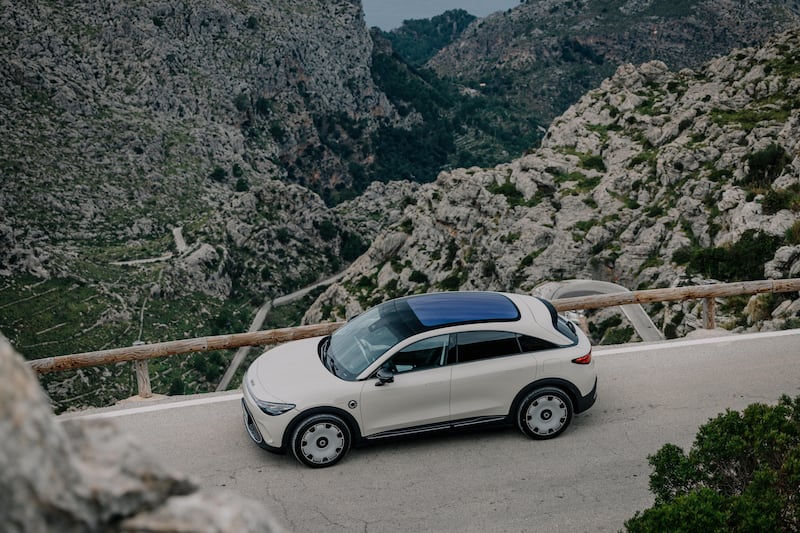
Pricier models – Premium and up – also get 22kW AC charging, which is great if you’re a regular user of kerbside “cabinet” chargers. Lesser versions make do with sluggish 7.4kW AC charging. Electric consumption, in the Premium 61kWh version we tested worked out at 18kWh/100km in mixed motorway and twisty mountain road driving.
The #3 is rapid in other ways, though. All the rear-drive models use the same 272hp electric motor that has enough power – and 343Nm of torque – to shove this 1,800kg crossover to 100km/h in just 5.8 seconds. That’s enough to beat many a supposed hot-hatch, and the step-off performance, that early initial rush of torque, is positively venomous if you’re injudicious with your accelerator foot.
The #3 cruises effortlessly at motorway speeds, but to be honest that’s where it’s best kept. It’s quiet and refined, and quite relaxing thanks to those big front bucket seats, which are heated and electrically adjusted in all #3 models.
It’s less good when it comes to twisty roads, where the sheer heft means that it’s just unable to really turn with any conviction, and that’s not helped by the dead-to-the-world steering. You can ramp things up a bit, of course. There is the 428hp Brabus version, bearing the name of the legendary Mercedes tuning company. That can hit 100km/h in a faintly ridiculous 3.7 seconds, and thanks to a special Brabus driving mode, it has sweeter steering, albeit still quite a flat chassis. Nonetheless, it feels the more convincing of the #3 models when the road gets challenging.
Inside, the dashboard and steering wheel are pleasingly chunky, and you can have an enjoyable game of spot-the-old-Mercedes-bits if you’re of a mind to. Every model bar the basic Pro gets a neat strip-style digital driver’s instrument panel behind the steering wheel, but the story of the big 12.8-inch infotainment screen in the middle is less good. In fact, it’s downright rotten.
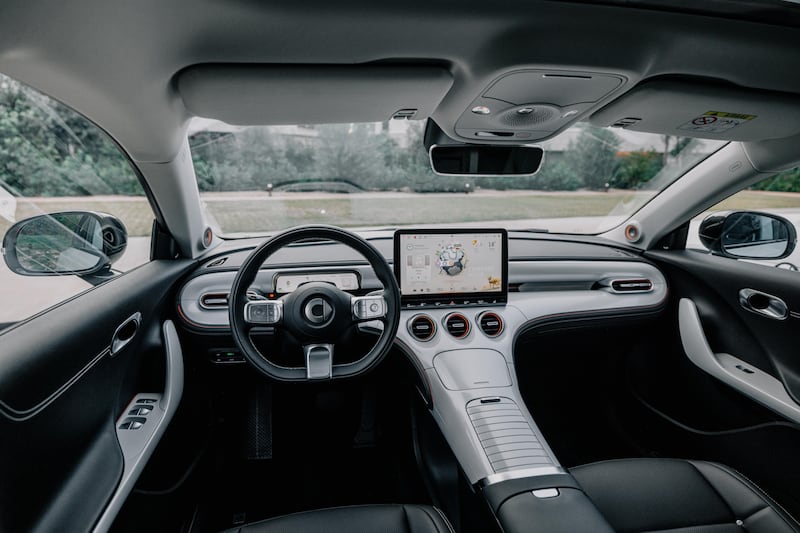
For a start, the menu layout on the screen is confusing and illogical, and it doesn’t help that it has to carry out functions – such as adjusting the side mirrors or the cabin temperature – which are far, far better carried out by physical switches. Then there’s the digital voice assistant, which is supposed to respond to a call of “Hello, Smart” but which usually doesn’t. And when it does, it often can’t do what you ask it to. Lower one of the frameless electric windows? Sure. Turn off the steering wheel heating? Nope, not a clue.
That’s slightly more of a clue than the hapless sat-nav, which seemed determined to think that a major European airport was actually located in the centre of town, up a small side street, and which proved equally clueless on winding country roads. Thankfully there’s standard Apple CarPlay and Android Auto.
That is cold comfort, however, when the bing-bongs start. The screen, and the #3 in general, is determined to warn and alert you of every speed limit change (and how much you’re exceeding it), every nibble of white line, every object in front of the car, every time you dare let your eyes stray from the dead-ahead to try and get the infernal touchscreen to work properly. The irony is palpable, but not half as palpable as the constant noises, which when they’re all going at once can sound like a Glockenspiel pushed down a long flight of stairs.
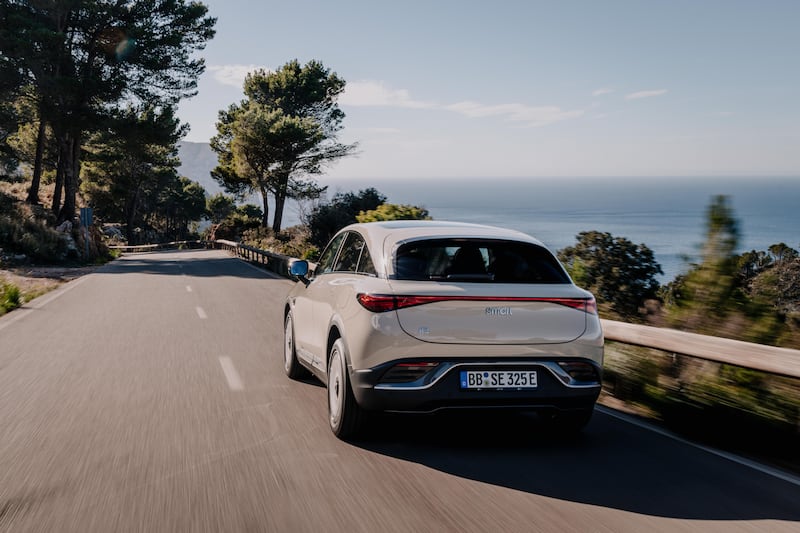
This would be understandable if such systems were keeping you, and others, safe but they’re not – the speed limit warning got the limit wrong half the time, often telling you it was okay to do 80km/h or more when actually the limit was 60km/h, or less. Such systems are far more distracting to the driver than actual real danger, and we really need to stop rewarding reliance one them with crash test scores.
At least the #3 is roomy. Dieter Rohkohl, Smart’s head of design, promised us that its new, bigger cars will still be true Smarts because they will be the roomiest cars in their segments. Check out the ample rear-seat legroom and headroom of the #3 and you might believe him, but the small-ish 370-litre boot and teeny-tiny “frunk” (just 15 litres) are less impressive.
Equally, the styling – although pleasingly sleek – looks too anonymous, and too much like it’s poaching ideas from other cars, notably BYD and Cupra. It’s also frustrating that Smart has to pretend that this really quite low-slung car is some kind of SUV – witness the chunky wheelarches and the ever-so-slightly-raised ride height – to get customers to pay any attention, but that is at least not Smart’s fault.
However, the #3 doesn’t quite do enough to make itself stand out from the increasingly crowded EV crossover segment. Unlike that daring, dramatic original ForTwo, it’s all a bit generic, a bit predictable. That might make for mass appeal, possibly, and should certainly make for a thicker slice of profit, but only if people can be enticed to buy one. On that, Smart might need to try a little harder.
- Find The Irish Times on WhatsApp and stay up to date


